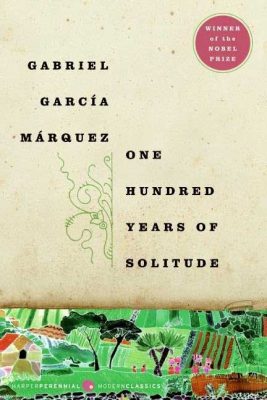Marquez Classic Felt Like It Took ‘One Hundred Years’ to Read
Review An assessment or critique of a service, product, or creative endeavor such as art, literature or a performance.
By Michael Malone
 “One Hundred Years of Solitude” is not for everyone.
“One Hundred Years of Solitude” is not for everyone.
In fact, it’s not for most.
“One Hundred Years of Solitude” is, in actuality, for an exceedingly slim portion of the population. MFA students at elite universities. Nobel Prize judges. Fiction editors at The New Yorker.
Not many else, I’m guessing.
Certainly not me.
Gabriel Garcia Marquez wrote “One Hundred Years of Solitude,” which was published in 1967. It tells the story of several generations of the Buendía family, which lives in the fictional Colombian town of Macondo.
Garcia Marquez is perhaps the best-known purveyor of magic realism, which is a realistic take on the world, but with lots of magical and supernatural stuff sprinkled in. “One Hundred Years” has a lot more magic than realism.
“Instead of going to the chestnut tree, Colonel Aureliano Buendia also went to the street door and mingled with the bystanders who were watching the parade,” Garcia Marquez writes. “He saw a woman dressed in gold sitting on the head of an elephant. He saw a sad dromedary. He saw a spoon and a pan. He saw the clowns doing cartwheels at the end of the parade and once more he saw the face of his miserable solitude when everything has passed by and there was nothing but the bright expanse of the street and the air full of flying ants with a few onlookers peering into the precipice of uncertainty.”
Reading “One Hundred Years” felt, to me, more like reading poetry than prose. Garcia Marquez can sling some sparkling verbiage, but I had a lot of trouble with this opium dream of a novel. I didn’t detect a whole lot of story, just some well-rendered scenarios. I had trouble remembering which Buendia family member something happened to. There is minimal dialogue, a lot of references to firing squads and loads of weird sex. Gypsies come to Macondo every year and show off some new inventions.
Having finished the novel a few hours ago, I cannot in good conscience truly tell you what it is about. Sure, stuff happens in Macondo. A railroad is built. There’s a civil war. A banana company sets up nearby. A rainstorm lasts for five years. Things end badly for the poor Buendias of Macondo.
But what does it all amount to? I’m not quite sure.
Hey, that’s just me. Readers love the book. “One Hundred Years” sports an impressive 4.11 rating, out of 5, from nearly a million raters on GoodReads. It somehow made it into Oprah’s Book Club.
William Kennedy said in The New York Times Book Review, “One Hundred Years of Solitude is the first piece of literature since the Book of Genesis that should be required reading for the entire human race…Mr. Garcia Marquez has done nothing less than to create in the reader a sense of all that is profound, meaningful, and meaningless in life.”
Garcia Marquez was born in Colombia in 1927, and got his start in writing as a newspaper reporter and film critic in Bogota. He later lived in Paris, Caracas, Havana, New York and Mexico City, the latter his longtime home.
His novels include “Love in the Time of Cholera,” “Of Love and Other Demons” and “Memories of My Melancholy Whores.”
Garcia Marquez was given the Nobel Prize in Literature in 1982 for his body of work.
I picked “One Hundred Years” up because Garcia Marquez has been in the news a decade after his death. He had an unpublished manuscript called “Until August.” Notably, it is said to be the only Garcia Marquez novel with a female protagonist, a married woman who visits her mother’s grave on a Caribbean island every August, and finds a new lover. Nearing his death, Garcia Marquez suffered from dementia, and could not finish the novel.
“He told me directly that the novel had to be destroyed,” said Gonzalo García Barcha, the author’s son, in The New York Times.
Dad’s wishes be damned. The book was published earlier this year.
“There is nothing else in the drawer,” said Garcia Barcha.
The publication of “Until August” made me realize I was a bit deficient in my reading of Garcia Marquez. So I picked up “One Hundred Years.”
I’ll leave you with a bit more from the book, where Jose Arcado Buendia goes crazy and trashes the house, until the neighbors step in.
“Ten men were needed to get him down,” Garcia Marquez writes, “fourteen to tie him up, twenty to drag him to the chestnut tree in the courtyard, where they left him tied up, barking in the strange language and giving off a green froth at the mouth.”
Weird, I know. But that’s “One Hundred Years of Solitude.”
Journalist Michael Malone lives in Hawthorne with his wife and two children.

Examiner Media – Keeping you informed with professionally-reported local news, features, and sports coverage.
